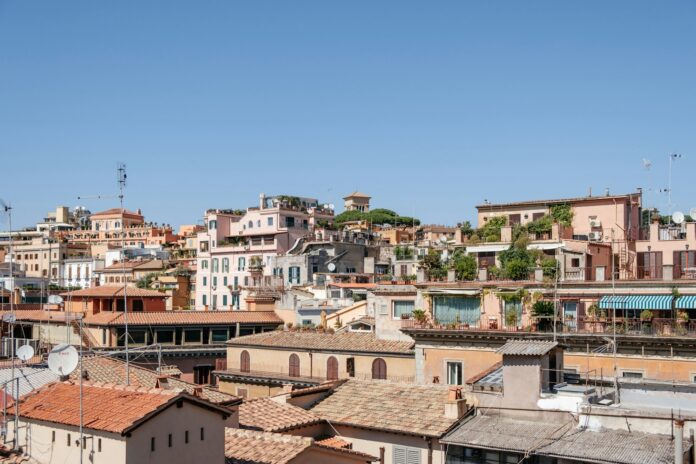Rome, the Eternal City, is a living museum where every corner tells a story of ancient civilizations and empires. Among the most iconic sites are the Colosseum, the Roman Forum, and Palatine Hill, which collectively provide a comprehensive glimpse into the grandeur of ancient Rome. This detailed guide will take you through a full-day itinerary that includes a guided tour of the Colosseum’s Arena Floor, a walk through the Roman Forum, and an exploration of Palatine Hill. By the end of this article, you will have a thorough understanding of what to expect from this tour and how to make the most of your time in Rome.
Introduction to the Colosseum, Roman Forum, and Palatine Hill
Significance of These Historical Sites
The Colosseum
The Colosseum is perhaps the most recognizable symbol of Rome. This massive amphitheater, built between AD 70 and 80, was the largest of its kind in the Roman Empire and hosted gladiatorial contests, public spectacles, and other forms of entertainment. The Colosseum’s architecture and engineering are marvels of their time, and its history is intertwined with the rise and fall of the Roman Empire.
The Roman Forum
The Roman Forum was the political, religious, and social heart of ancient Rome. It was here that public speeches were made, triumphal processions were held, and the Senate convened. The Forum is a sprawling complex of ruins that includes temples, basilicas, and other important structures that were central to Roman public life.
Palatine Hill
Palatine Hill is one of the most ancient parts of the city and is considered the birthplace of Rome. According to legend, it was here that Romulus founded the city in 753 BC. Over time, the hill became the residential area for Rome’s elite, including emperors, who built grand palaces overlooking the Forum. The ruins of these palaces and other structures provide a fascinating glimpse into the opulence of ancient Roman life.
Why This Tour is a Must-Do
This guided tour offers a unique opportunity to explore these three iconic sites in a single day. The tour is designed to provide a deep understanding of Rome’s history, architecture, and culture through expert commentary and access to areas not available to the general public, such as the Colosseum’s Arena Floor.
Morning: Colosseum Arena Floor Tour
Overview of the Colosseum’s History
Construction and Design
The Colosseum, also known as the Flavian Amphitheatre, was commissioned by Emperor Vespasian and completed by his son Titus. It was an architectural feat of its time, with a capacity of 50,000 to 80,000 spectators. The Colosseum was designed to host a variety of events, from gladiatorial contests to mock naval battles, and its tiered seating was a reflection of the social hierarchy of Roman society.
Cultural Significance
The Colosseum was more than just an arena for bloodsport; it was a tool of political propaganda and a symbol of the power and grandeur of the Roman Empire. The games held in the Colosseum were meant to entertain and appease the masses, but they also reinforced the authority of the emperor and the state.
Exclusive Access: The Arena Floor
What Makes the Arena Floor Special
The Arena Floor is the central stage where gladiators fought, and wild animals were pitted against each other in deadly combat. Walking on this reconstructed wooden floor offers a unique perspective of the Colosseum, allowing you to stand where the action once took place and to imagine the roar of the crowds.
Highlights of the Arena Floor Tour
- The Gladiator’s Perspective: Standing on the Arena Floor gives you a sense of the scale and intensity of the events that took place here. You’ll be able to look up at the tiers of seating and understand the magnitude of the spectacle.
- The Hypogeum: From the Arena Floor, you can see the hypogeum, the underground network of tunnels and chambers where gladiators and animals were kept before being lifted to the arena through trapdoors. While this area is not always accessible to the public, your guide will provide detailed explanations of its function and significance.
- Photo Opportunities: The Arena Floor offers some of the best vantage points for photography, allowing you to capture the grandeur of the Colosseum from a unique angle.
Booking the Arena Floor Tour on Viator
For a guided tour that includes exclusive access to the Arena Floor, booking through Viator is recommended. The platform offers various tour options that cater to different schedules and preferences. To ensure you don’t miss out, book your tour here: Viator Colosseum Arena Floor Tour.
Late Morning: Exploration of the Roman Forum
Understanding the Layout of the Roman Forum
The Heart of Ancient Rome
The Roman Forum was the epicenter of political, religious, and social life in ancient Rome. It was here that the Senate met, where triumphal processions ended, and where public speeches and trials took place. The Forum is a vast complex of ruins that includes temples, basilicas, and monuments that date back to the earliest days of the Republic.
Key Structures and Their Significance
- The Temple of Saturn: One of the oldest temples in the Forum, the Temple of Saturn was dedicated to the god Saturn and served as the Roman treasury.
- The Arch of Titus: This triumphal arch commemorates Emperor Titus’s victory in the Jewish War and is one of the best-preserved monuments in the Forum.
- The Curia: The Senate House, or Curia, was the meeting place of the Roman Senate. The building you see today was rebuilt by Julius Caesar and is remarkably well-preserved.
- The Basilica of Maxentius and Constantine: This massive basilica was one of the largest buildings in the Forum and served as a venue for legal proceedings and other public events.
Guided Tour Through the Forum
Why a Guided Tour is Essential
The Roman Forum is a complex site with layers of history that can be difficult to understand without expert guidance. A guided tour provides context and brings the ruins to life, explaining the significance of each structure and the events that took place there.
Highlights of the Forum Tour
- The Rostra: The Rostra was the speaker’s platform where orators, including Cicero, delivered speeches to the Roman people. It was a place of political power and influence.
- The Temple of Julius Caesar: This temple was built on the site where Julius Caesar was cremated, and it became a place of worship for the deified Caesar.
- The Via Sacra: The Sacred Road was the main street of ancient Rome, leading from the Capitoline Hill through the Forum to the Colosseum. Walking along this road gives you a sense of the grandeur of the Roman Empire.
Booking the Roman Forum Tour on Viator
To fully appreciate the Roman Forum, consider booking a guided tour through Viator. These tours often include skip-the-line access and are led by knowledgeable guides who provide detailed explanations of the site. Book your tour here: Viator Roman Forum Tour.
Afternoon: Discovering Palatine Hill
The Historical Importance of Palatine Hill
The Birthplace of Rome
According to Roman mythology, Palatine Hill is where Romulus founded the city of Rome after killing his brother Remus. The hill became the residential area of the Roman elite, including emperors, who built grand palaces there. The ruins of these palaces, along with temples and other structures, provide a glimpse into the lives of Rome’s most powerful figures.
Palatine Hill’s Role in Roman Culture
Palatine Hill was not only the political and cultural center of ancient Rome but also a symbol of its origins. The hill’s strategic location overlooking the Forum and the Circus Maximus made it an ideal place for the homes of Rome’s elite.
Key Sites on Palatine Hill
The Palace of Domitian
The Palace of Domitian is one of the most significant ruins on Palatine Hill. Built in the 1st century AD, this sprawling complex served as the main residence of the emperors for over 300 years. The palace includes impressive courtyards, gardens, and reception rooms, all of which reflect the grandeur of imperial Rome.
The House of Livia
The House of Livia, the wife of Emperor Augustus, is one of the best-preserved residences on Palatine Hill. The house is famous for its frescoes, which depict scenes of nature and mythology, and offer insight into the domestic life of Rome’s elite.
The Farnese Gardens
The Farnese Gardens, created in the 16th century, are located on the western side of Palatine Hill. These terraced gardens offer stunning views of the Roman Forum and the Colosseum and are a peaceful retreat from the hustle and bustle of the city.
Guided Tour of Palatine Hill
Why Palatine Hill is a Must-Visit
Visiting Palatine Hill is essential for anyone interested in the history of Rome. The hill offers a unique perspective on the city’s origins and development, and the ruins provide a tangible connection to Rome’s legendary past.
What to Expect on the Tour
- Panoramic Views: Palatine Hill offers some of the best views of Rome, including the Colosseum, the Roman Forum, and the Circus Maximus. Your guide will point out key landmarks and explain their significance.
- In-Depth Commentary: A guided tour of Palatine Hill provides detailed explanations of the archaeological remains and their historical context, helping you to understand the significance of the site.
- Photo Opportunities: The ruins and gardens of Palatine Hill offer numerous opportunities for photography, with stunning backdrops of ancient Rome.
Booking the Palatine Hill Tour on Viator
To make the most of your visit to Palatine Hill, consider booking a guided tour through Viator. These tours often include access to the Colosseum and the Roman Forum, providing a comprehensive experience of ancient Rome. Book your tour here: Viator Palatine Hill Tour.
Evening: Conclusion of Your Day in Ancient Rome
Reflecting on the Experience
A Journey Through History
In one day, you have explored the most significant sites of ancient Rome: the Colosseum, the Roman Forum, and Palatine Hill. This journey through history has provided a deeper understanding of the power, culture, and architecture of the Roman Empire. The stories and legends that surround these sites continue to captivate visitors, making Rome a must-visit destination for history enthusiasts.
Preparing for Future Explorations
Planning Your Next Visit to Rome
While this tour covers the most iconic sites of ancient Rome, the city is rich with other historical and cultural attractions. Consider extending your stay to visit additional sites such as the Vatican Museums, the Pantheon, and the Trevi Fountain. Each of these sites offers a unique insight into the history and culture of Rome.
Final Thoughts
Making the Most of Your Visit
To fully appreciate the depth and complexity of Rome’s history, it is recommended to take your time at each site, listen to your guide’s commentary, and immerse yourself in the atmosphere of the ancient city. Whether you are a first-time visitor or a seasoned traveler, this tour provides a comprehensive and enriching experience that will leave you with lasting memories of Rome.
For more travel tips and lifestyle content, visit Izase, your ultimate resource for living your best life and exploring the world.
Disclaimer: The information provided in this article is accurate to the best of our knowledge at the time of writing. However, details of attractions, including opening hours, ticket prices, and tour availability, may change. We recommend checking the booking pages on Viator for the most up-to-date information.
MORE FROM IZASE


